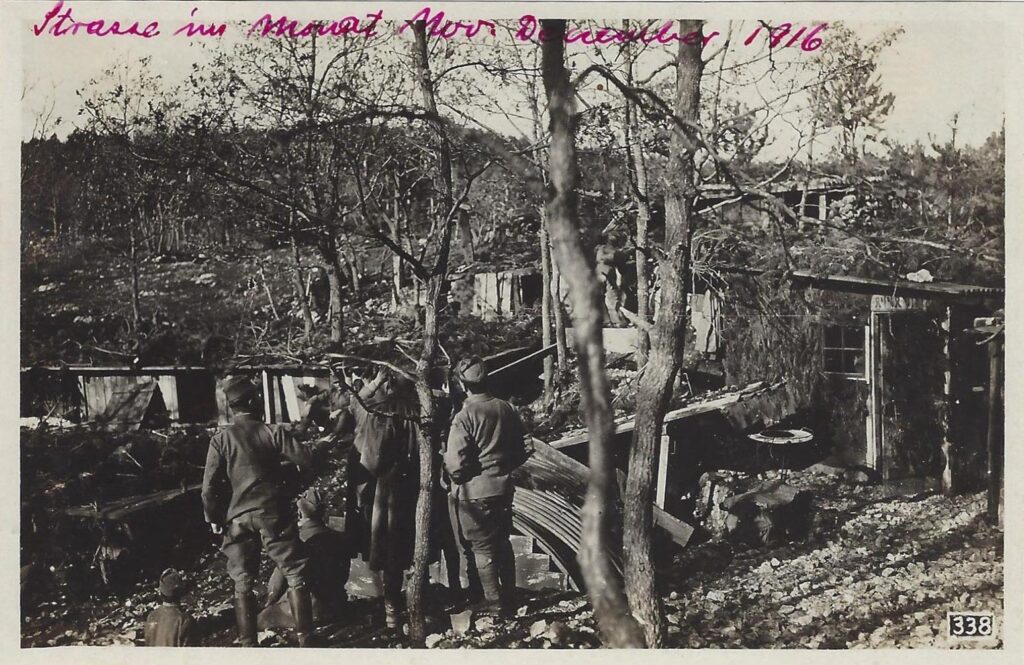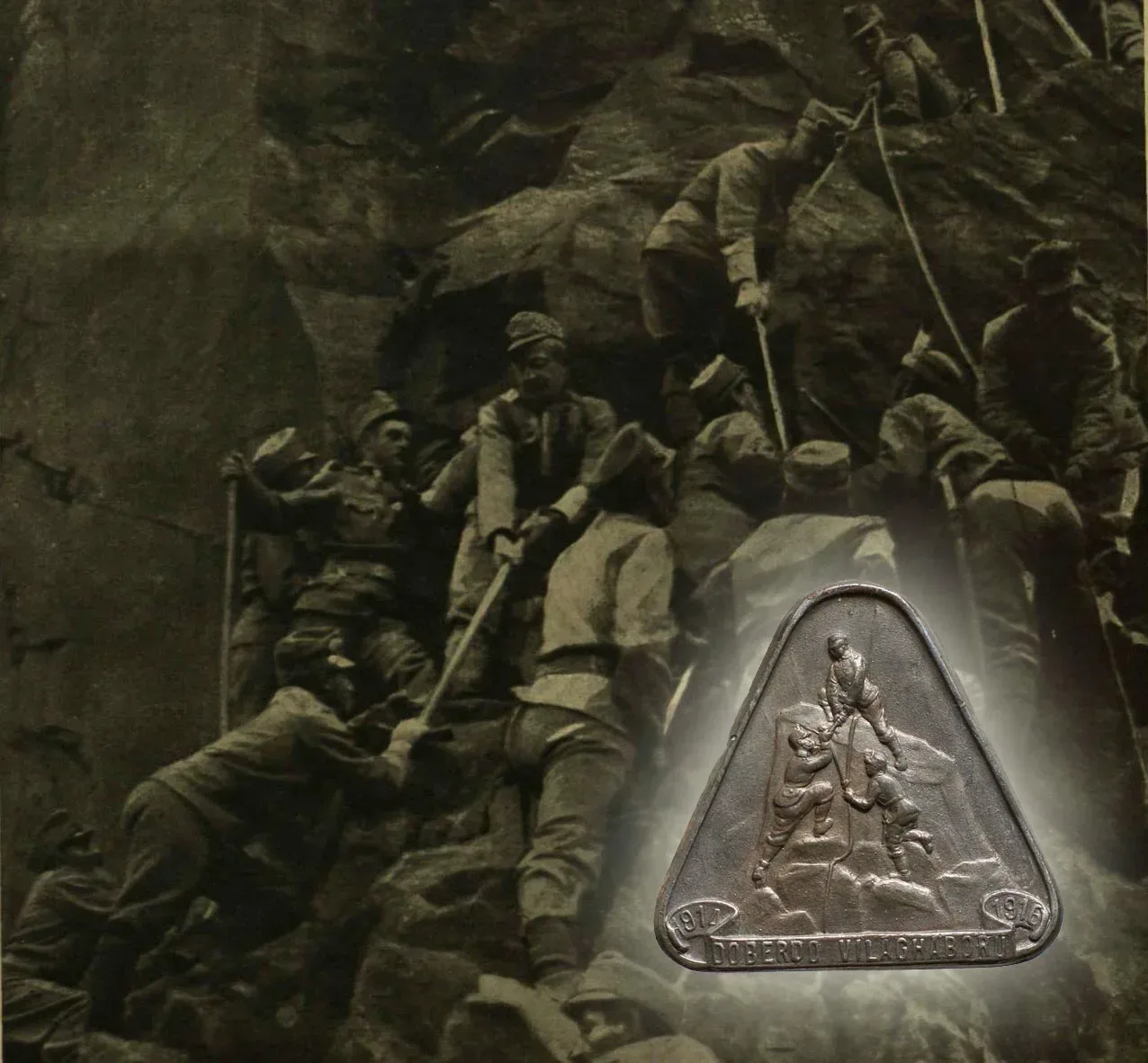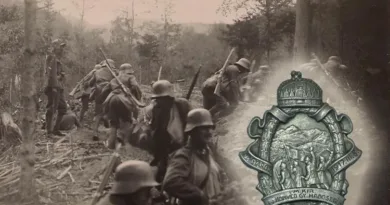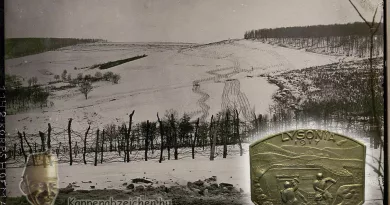Doberdo – Karst Plateau
The place Doberdó in the Hungarian common language denoted the Karst Plateau on the Italian front. This plateau stretches south from the town of Görz and the river Wippach to the coast. It was the scene of the bloodiest struggles in the Great War. The area is hilly and heavily stony. Since there are no large, steep hillsides, it is easier to move and attack on it. Defenders can only dig ditches and covers in the rocky soil with great difficulty. At the same time, the limestone terrain with the sinkholes and natural caves hidden in it can provide good cover if properly constructed.

The defense tactics were built on this. There were only observers in the trenches of the first line. The attackers’ artillery fire shattered obstacles before the attacks, burying the trenches. But it did little harm to the soldiers withdrawn into the caves and caverns. When the attack began and the artillery stopped firing, the defenders occupied the remains of the front line. The seizures were received with great firepower. Of course, not all seizures were repulsed. If the first line was occupied by the enemy, the attack was halted in the second or third position built backwards. Attacking Italians only rarely reached the third line of defense, where the battalion and regimental command positions were. If they succeeded, it was a very serious problem. In this case the lines had to be adjusted by counter-attack in any case, otherwise the defense could have collapsed.
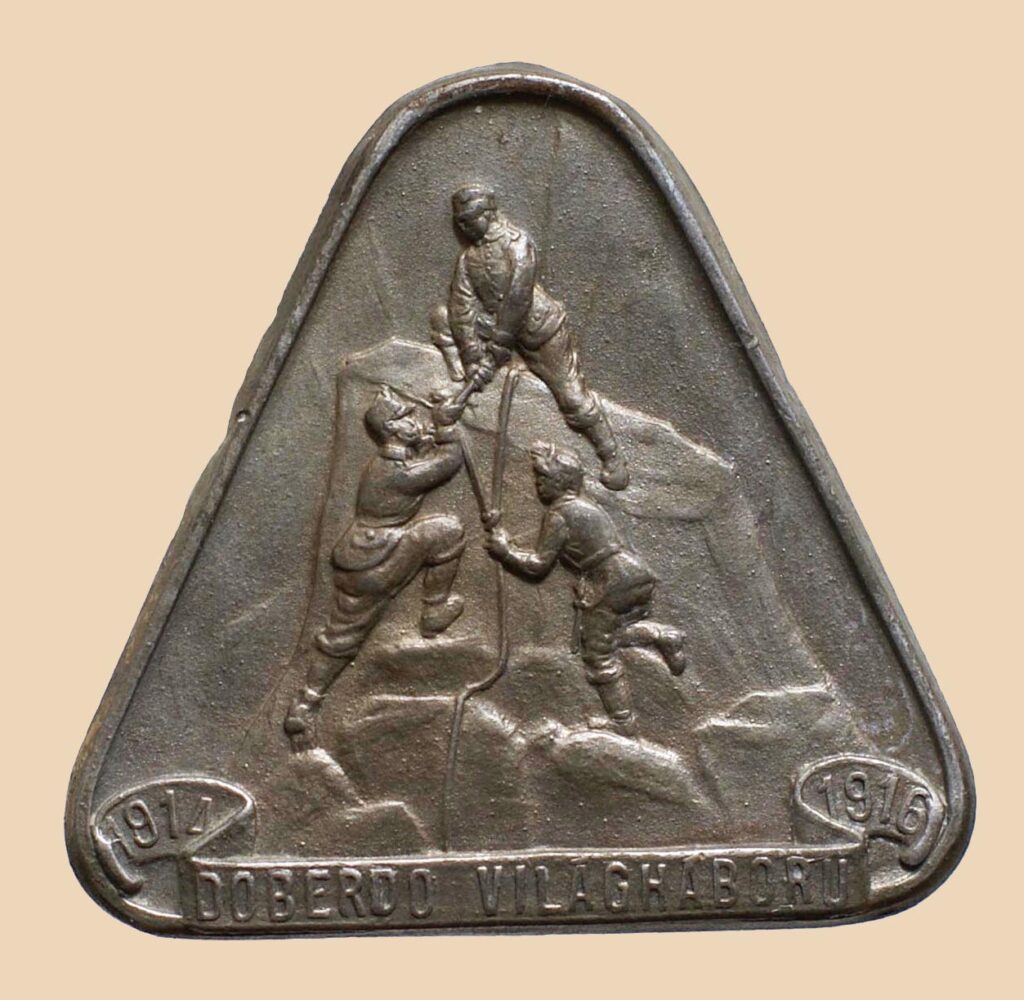
Greatest damage in the area was caused by the constant artillery fire. The attacks came in a campaign-like manner and took many casualties. But even during the breaks, there were always casualties from the artillery fire. The soldiers could not be in the caverns all the time. From time to time, they had to go to the trenches to improve defense positions, bring materials forward, or repair broken phone lines. The Italians fired on all such movements. Many victims fell on such occasions.
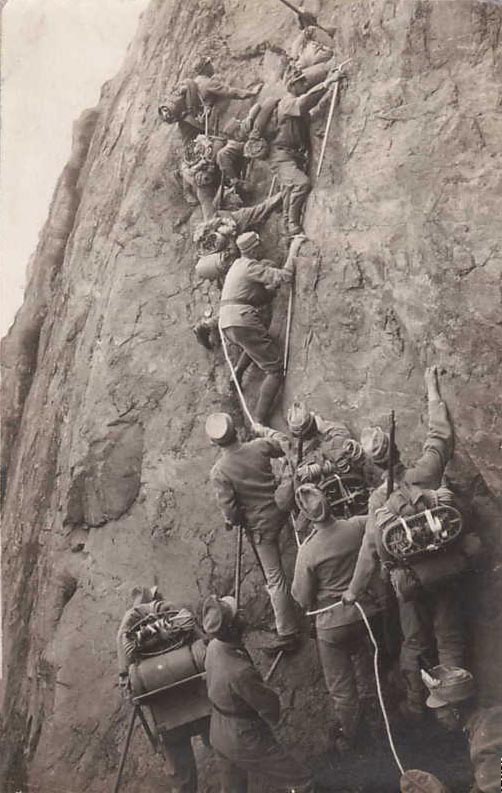
The images and badge attached to the post try to clear up a common misunderstanding. The image of the badge, soldiers moving on high mountain terrain do not depict the terrain typical of Doberdo. Climbs took place between the high mountains of Tyrol, as shown by the badge and the attached excerpt and photo. In contrast, Doberdo looked like the one pictured last. Here we see a battle post built into a sinkhole, just behind the first line at Fajti Hrib. You can see the relatively sloping and extremely stony terrain.
